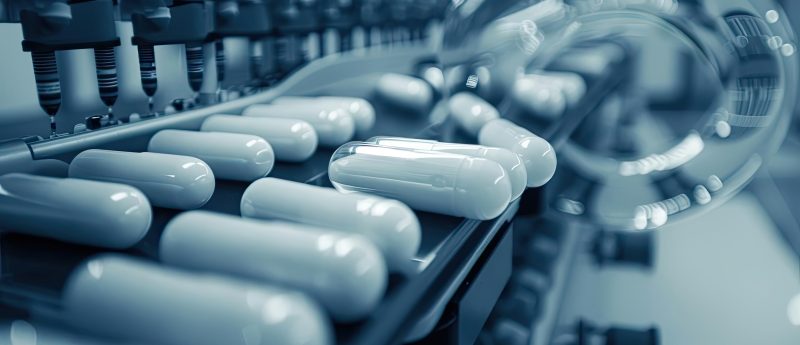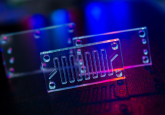Bioanalysis for monitoring the organ-on-a-chip systems

In this editorial Yu Shrike Zhang (Harvard Medical School; MA, USA), a previous finalist of the Bioanalysis Rising Star Award, discusses his research and hopes for the future. He details the emergence of organ-on-a-chip systems and how these platforms reproduce tissue functions outside the human body. He then continues to explore how organ-on-a-chip systems have been successfully applied to promoting drug development.
“Various bioanalysis tools are strongly desired for integration with the organ-on-a-chip systems for in situ, continual, and noninvasive monitoring of microtissue behaviors and responses.”
The organ-on-a-chip systems
The organ-on-a-chip systems have recently emerged as miniaturized models of human tissues formed by combining developmental biology/tissue engineering approaches with microfluidic devices [1]. While the former gives the structural similarity of the generated tissue models to their in vivo counterparts, the latter enables incorporation of biomimetic dynamic cues, including but are not limited to fluid flow, shear stress and mechanical strain, providing physiologically relevant microenvironments for the microtissues to reside. As such, these organ-on-a-chip platforms reproduce tissue functions outside the human body better than the conventional models based on planar, static cell cultures and can perhaps outperform the animals in cases where strong interspecies discrepancies exist, or when animal models are non-existent (e.g. for certain diseases) [1,2]. The organ-on-a-chip systems have been successfully applied to promoting drug development as well as to facilitating personalized therapy [3].
Understanding microtissue behaviors and responses
There are a set of parameters that one could derived from the microtissues in the organ-on-a-chip platforms to understand their behaviors under homeostasis and their responses to external insults, such as pharmaceutical compounds, chemicals, or biological species. For example, the morphologies of the microtissues are prone to alteration, which may range across multiple scales from that at tissue level (e.g. intercellular adhesion/disassembly, extracellular matrix) to those at cellular (e.g. cell shape) and subcellular (e.g. cytoskeleton, organelles) levels. In addition to morphological alterations, the genetic signatures of the cells in the microtissues may vary as well, indicated by gene and protein expressions. Metabolic levels (e.g. glucose metabolism, drug metabolism) are additional indicators of cellular functions, which are in particular related with drug efficacy and toxicity. Moreover, environmental parameters including pH, oxygen tension, flow rate, shear stress and temperature, are important and may interfere with microtissue behaviors. While most tissue types are static, a few are mechanically and/or electrically active, such as the muscles (skeletal, smooth, and cardiac) and the neurons. The contraction of the muscular tissues and the electrical signals in the neural tissues are known to respond in accordance to external stimuli.
Bioanalysis
While some stimuli induce acute tissue failures, many more can create chronic cellular reactions or delayed cell responses. Consequently, there is a serious unmet demand of analytical methods that can be directly integrated with microfluidic chip devices for in situ, continual and noninvasive monitoring of microtissue behaviors and responses [4]. Microscopic strategies need to be compatible with the organ-on-a-chip devices. Miniaturized imagers have been developed for higher-throughput morphological characterizations of microtissues in a continuous manner [5], which nevertheless, typically fail to perform high-resolution, volumetric imaging. Integration with conventional high-end microscopy is possible, but the usually thick bottoms of the chip devices and three-dimensionality of the microtissues make it a challenge for on-chip imaging even in the ways typically done with 2D cultures. Development of microfluidic chip-integrable miniature imagers with volumetric imaging capacity at reasonable resolution is therefore, in high demand.
The adoption of current analytical methods for soluble biomarkers, mainly based on enzyme-linked immunosorbent assay (ELISA), chemical assays and mass spectrometry for drug toxicity assessments using organ-on-a-chip models is also tricky because i) they require collection of large amount of samples from the microfluidic system, which is not feasible in low-volume organ-on-a-chip platforms; ii) analyses are static and requires lengthy sample preparations; and iii) they cannot be readily integrated and automated for real-time and in-line monitoring of microtissue responses. Strategies to build these different sensors within microfluidic devices thus become especially critical for in situ biomarker quantifications. Same with physical sensors that measure microenvironmental cues – combination with microfluidic chips will allow for in-line monitoring without the need for external sampling. A recent example from our own work has demonstrated the feasibility of this concept of integrating optical, chemical and physical sensors with multi-organ-on-chips platforms [6].
Additional bioanalysis tools may include electronics that probe mechanoelectrical signals of microtissues. This type of sensing has been relatively well-developed due to its ease of device integration. For example, electrodes have been patterned onto chip substrates for simultaneous in situ conductivity and strain measurements [7]. Potential innovations fall on direct bioprinting of electronics components together with the chip device for in situ conformal sensing of cardiac microtissue contractions [8], which may be extended to other tissue types where relevant.
In summary, although the field of tissue models and organ-on-a-chip systems has seen tremendous progress in the last 2 decades, their integration with bioanalysis is still in its infancy. Success in sensor integration, in particular those that are cost-effective, robust, sensitive and multiuse, will make it possible in the future to achieve personalized screening of drug toxicity, efficacy and pharmacokinetics at unprecedented ease and accuracy.
Acknowledgment
The author acknowledges supports from the National Cancer Institute of the National Institutes of Health Pathway to Independence Award (K99CA201603) and the New England Anti-Vivisection Society.
References
- Bhatia SN, Ingber DE. Microfluidic organs-on-chips. Nat. Biotechnol. 32(8), 760–772 (2014).
- Yesil-Celiktas O, Hassan S, Miri AK et al. Mimicking human pathophysiology in organ-on-chip devices. Adv. Biosyst. (2018).
- Esch EW, Bahinski A, Huh D. Organs-on-chips at the frontiers of drug discovery. Nat. Rev. Drug Discov. 14(4), 248–260 (2015).
- Zhang YS. Engineering challenges in microphysiological systems. Future Sci. OA, FSO209 (2017).
- Zhang YS, Ribas J, Nadhman A et al. A cost-effective fluorescence mini-microscope for biomedical applications. Lab Chip, 15(18), 3661–3669 (2015).
- Zhang YS, Aleman J, Shin SR et al. Multi-sensor-integrated organs-on-chips platform for automated and continual in situ monitoring of organoid behaviors. Proceedings of the National Academy of Sciences USA, 114(12), E2293–E2302 (2017).
- Hu N, Wang T, Wan H et al. Synchronized electromechanical integration recording of cardiomyocytes. Biosens. Bioelectron. 117, 354–365 (2018).
- Lind JU, Busbee TA, Valentine AD et al. Instrumented cardiac microphysiological devices via multimaterial three-dimensional printing. Nat. Mater. 16, 303 (2016).





